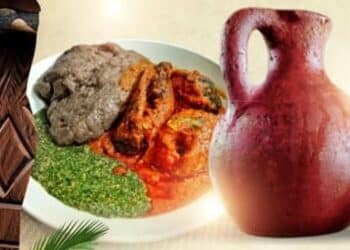The consumption of raw meat in Ethiopia holds profound historical and cultural significance, dating back to ancient traditions that have been meticulously preserved over generations. Embedded in the very fabric of Ethiopian society, the practice transcends mere culinary preference, embodying an essential cultural ritual that continues to thrive in contemporary times.
In Ethiopian culture, raw meat, commonly referred to as “Tire Siga,” is more than a gastronomic delight; it is a symbol of tradition and communal bonding. The preparation and sharing of raw meat are ceremonies that reflect respect for heritage and continuity of ancestral customs. Historically, this tradition is linked to events of social importance, such as weddings, religious celebrations, and public holidays, where eating raw meat serves as both a cultural touchstone and a form of celebration.
Raw meat consumption is deeply entrenched in the everyday lives of Ethiopians, particularly during festive occasions. Certain events like Meskel, Christmas (Genna), and New Year’s (Enkutatash) are notable for the communal preparation and consumption of raw meat dishes. These festive moments provide an opportunity for families and communities to come together, reinforcing social ties and collective identity through shared culinary experiences.
Moreover, the perception of raw meat in Ethiopian society is one of respect and reverence. It is seen as a delicacy that requires both skill in preparation and an understanding of its cultural implications. This esteem is evident in the meticulous selection of meat and the careful rituals that accompany its serving, emphasizing its status as a prized cultural artefact rather than ordinary food.
Through this lens, the Ethiopian raw meat culture stands as a testament to the nation’s rich and enduring heritage. It is a vivid reminder of the interplay between food and cultural identity, showcasing how culinary traditions can encapsulate collective memory and societal values.
Ethiopia: Popular Raw Meat Dishes and Their Preparation
Ethiopia’s culinary spectrum includes several renowned raw meat dishes that hold a significant place within the nation’s food culture. Among these, Kitfo and Gored Gored stand out for their unique flavours and traditional preparation methods.
Kitfo, often referred to as the jewel of Ethiopian cuisine, is a dish made from finely minced raw beef seasoned with mitmita (a spicy chilli powder) and nitre kibbeh (a clarified butter infused with herbs and spices). The preparation involves first selecting the highest quality beef, which is usually obtained from young, tender cows. The beef is then meticulously minced until it achieves a smooth, fine texture. This minced meat is mixed with nitre kibbeh, which imparts a rich, buttery taste to the dish, and seasoned with mitmita, adding a spicy, zesty kick. Traditionally, kitfo is served with a side of gomen (cooked collard greens) and ayib (fresh Ethiopian cheese) which provide a balanced contrast to the spicy and buttery beef.
Gored Gored, another staple raw meat dish in Ethiopian cuisine, is prepared somewhat differently. It consists of small, diced cubes of raw beef, which are slightly larger than the minced meat used in kitfo. The dish is characteristically seasoned with berbere, a robust spice blend made from chilli peppers, garlic, ginger, basil, and other spices. Unlike kitfo, gored gored maintains a more robust and chewy texture due to the larger chunks of beef. This dish is often complemented with injera, a sourdough-risen flatbread with a slightly spongy texture, used to scoop up the marinade and beef. A side of sliced green chillies and a touch of mustard is also commonly served to heighten the spicy profile of the meal.
Both kitfo and gored gored are not only culinary delights in themselves but also a testament to Ethiopia’s rich gastronomic traditions. Through these dishes, one can appreciate the subtle yet intricate use of spices and flavours that define Ethiopian raw meat culture. These raw meat dishes are more than just meals; they embody a historical tradition and cultural identity, bringing a piece of Ethiopia’s essence to the table.
Health Considerations and Safety Practices
The consumption of raw meat, or “tere siga,” is a deeply ingrained cultural practice in Ethiopia, with a rich history and culinary significance. However, eating raw meat comes with certain health risks that must be carefully managed to ensure safety. Raw meat can harbour harmful bacteria, parasites, and pathogens that can lead to foodborne illnesses if proper precautions are not taken. Therefore, understanding the safety measures and traditional practices that mitigate these risks is crucial.
One of the primary concerns when consuming raw meat is the potential for bacterial contamination. Pathogens such as E. coli and Salmonella are common culprits, and these can cause severe gastrointestinal distress. To minimize these risks, Ethiopians traditionally follow several stringent practices. Freshness is paramount—raw meat is typically consumed shortly after slaughter, ensuring that it is at its freshest and least likely to harbour harmful bacteria. The meat is often sourced from locally reared animals, reducing the likelihood of contamination during transportation and handling.
Moreover, traditional knowledge emphasizes certain preparation techniques to ensure safety. For instance, raw meat is often consumed with spices and condiments such as mitmita (a blend of chilli powder, cardamom, and other spices) and awaze (a type of Ethiopian chilli paste), which have antibacterial properties. These spices not only enhance the flavour but also serve as a natural safeguard against potential pathogens. Additionally, meat is often marinated in lemon juice or vinegar, which can further reduce bacterial load.
Expert opinions from nutritionists and local health authorities support these traditional practices. Dr. Abebe Mekonnen, a leading nutritionist in Ethiopia, affirms that “consuming raw meat, when done according to traditional methods, significantly reduces the risk of foodborne illnesses.” Emphasizing proper hygiene, Dr. Mekonnen advises that hands and utensils should be thoroughly cleaned before handling raw meat. Furthermore, storage practices also play a vital role: raw meat should be kept at appropriate refrigeration temperatures and consumed within a short period to avoid spoilage.
In summary, while there are inherent risks associated with consuming raw meat, the traditional practices followed in Ethiopia incorporate several safety measures that effectively mitigate these risks. Emphasis on freshness, the use of antibacterial spices, proper handling, and hygienic preparation are essential components of these practices, ensuring that the cultural delicacy of raw meat can be enjoyed with minimized health concerns.
Cultural Etiquette and Social Aspects
The cultural etiquette and social aspects surrounding the consumption of raw meat in Ethiopia epitomize the rich tapestry of Ethiopian traditions. This practice transcends mere gastronomic preference, embedding itself profoundly in the communal and familial fabric of the society. The customs and rituals involved in preparing and eating raw meat dishes are venerated, with each step observed meticulously to honour ancestral practices and beliefs.
During the preparation phase, meticulous attention is given to the freshness and quality of the meat. The involvement in these preparatory rituals often signifies respect and adherence to cultural norms. Traditionally, these dishes, such as “kitfo” or “tere siga,” are prepared for special gatherings and celebrations, symbolizing abundance and goodwill.
Communal participation is a key element of this culinary tradition. It is common for family members, friends, and sometimes even entire neighbourhood groups to gather around a large platter of raw meat, sharing not just the food but the moment. This collective eating experience fosters a sense of unity and belonging, reinforcing social bonds and communal spirits. Offering raw meat to guests is also a gesture of hospitality, signifying trust and respect for the visitors.
Moreover, how raw meat is consumed reflects social etiquette. Eating with one’s hands and partaking from the same platter is seen as an expression of equality and shared identity. The practice underscores a deep-rooted social cohesiveness, where food becomes a medium for connection and cultural expression. The raw meat culture of Ethiopia, thus, is not merely a culinary tradition but a social nexus that embraces the values of unity, hospitality, and respect for the collective heritage.












